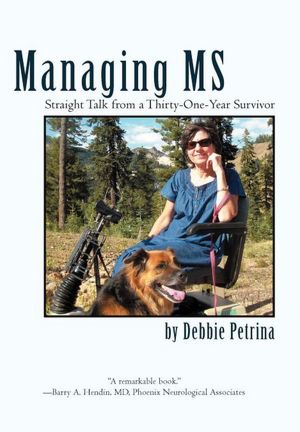“Beneficial for Many Conditions”
July 27, 2012
I was approached by Melanie L. Bowen requesting me to consider a guest post for my blog. After reading the article about the benefits of using massage therapy during cancer treatment, I agreed.
When reading her article that follows, you can substitute “MS” every time the word “cancer” is used. Massage is an excellent therapy for persons with MS, giving relief for both body and soul. And this would be true for other chronic illnesses/conditions as well.
Using Massage Therapy During Cancer Treatment
Massage therapy is a growing career field, as most people love to indulge in a good massage. Those who become massage therapists usually do so in order to help people relax. What can be especially satisfying for the therapist is the knowledge that he or she is making a real difference in the life of someone who particularly needs extra special care. That person could be aged or suffering from an injury, from stress or from a chronic illness, such as cancer.
There are many complimentary therapies that can be used alongside traditional cancer treatments. Most doctors now support the use of massage therapy to ease the physical discomfort, anxiety and fatigue that often accompanies having cancer. Depending upon the type of treatment chosen and the stage of disease advancement, the physical effects may be severe.
For example, when a person is suffering from mesothelioma, the pain and stress can be quite overwhelming. Massage gives you the opportunity to help alleviate the emotional distress and physical pain often experienced with this diagnosis.
The benefits provided are numerous. Massage therapy during cancer treatment is considered an integrative intervention. Through skilled hands, you can:
• Increase the flow of blood and lymphatic fluid, helping the body to flush itself
• Ease muscle pain from spasms and built up tension and toxins
• Augment the effects of pain medication while stimulating the release of endorphins
• Decrease inflammation, edema and swelling
There are some precautions to follow while getting a massage while treating cancer. Soft tissue areas should be avoided like:
• The tumor site
• An open wound, a tear or an area of skin breakdown
• A radiation site
• An area effected with redness, pain, swelling and warmth
Current medical and professional studies now demonstrate the efficacy of massage therapy in assisting those with cancer in managing their pain, anxiety, fatigue and depression. Sadly, cancer is increasing and many of those diagnosed are going to look for complementary and alternative medical therapies and integrative interventions.
Keep in mind that there are very minor risks involved in using massage therapy during cancer treatment as long as a physician has given the green light. Massage therapy used during this time in a client’s life can truly make a difference in his or her physical comfort and mental state. Without a doubt, this is one of the most rewarding experiences that you can have.
###
For MS patients receiving injections for DMA’s, the same precautions should be followed for soft tissue areas.
I was curious after reading Melanie’s article about insurance coverage for massage therapy for MS and did some research. Medicare said they will cover 80% of the cost, as long as the massage is done by a licensed massage therapist who is employed by a physical therapy facility/center. My insurance carrier, Highmark Blue Cross/Blue Shield, will cover 100% under the same requirement! BC/BS told me this is something they just started in 2011.
So it is worth inquiring about massage therapy with your private carrier. After all these years, it is finally getting the recognition and support it deserves from both doctors and insurance companies.
For those of us with MS, massage is not just a luxury for sore muscles, pain and spasms. It is a necessity, and certainly worth pursuing.
Thank you Melanie, for your contribution and efforts!


